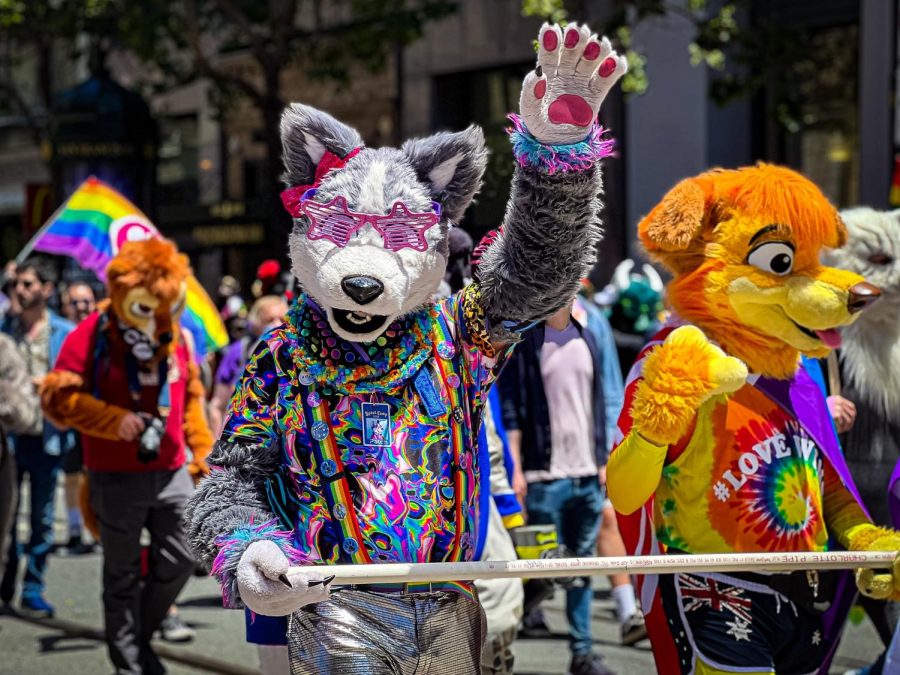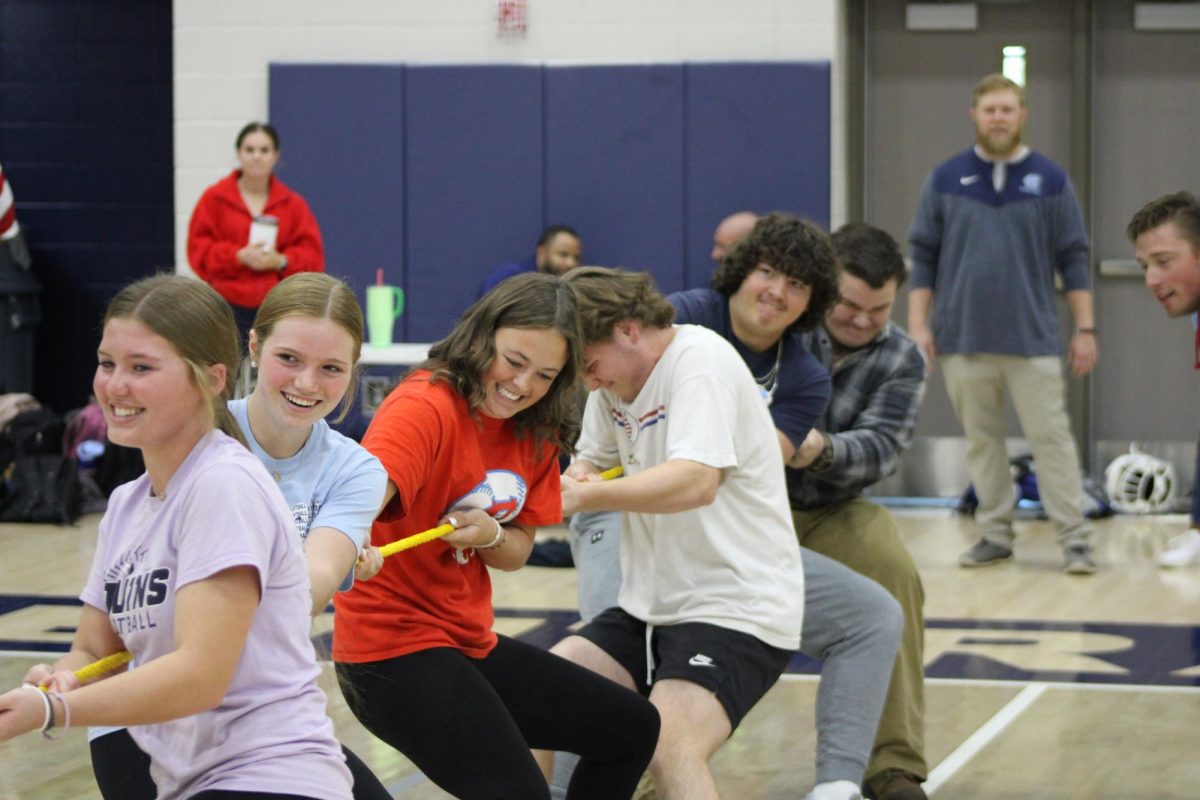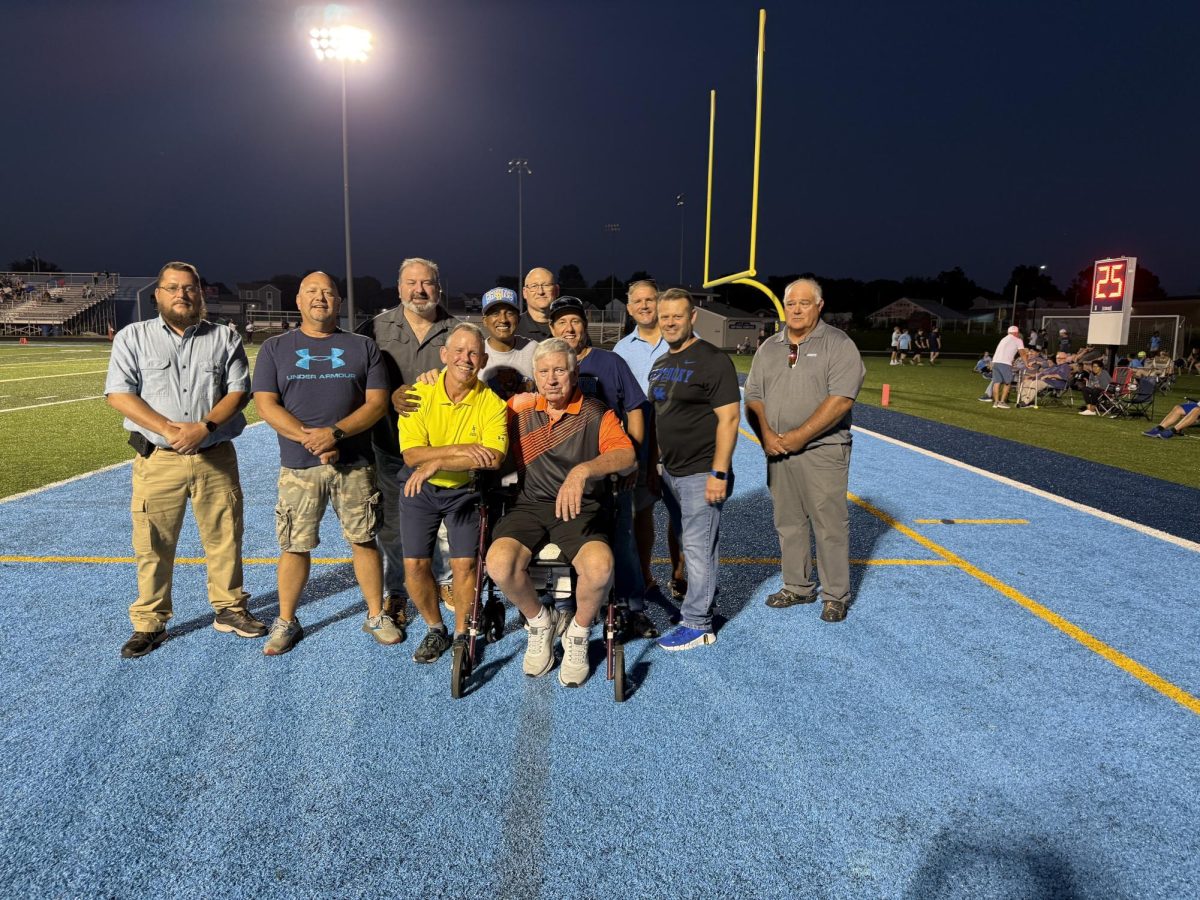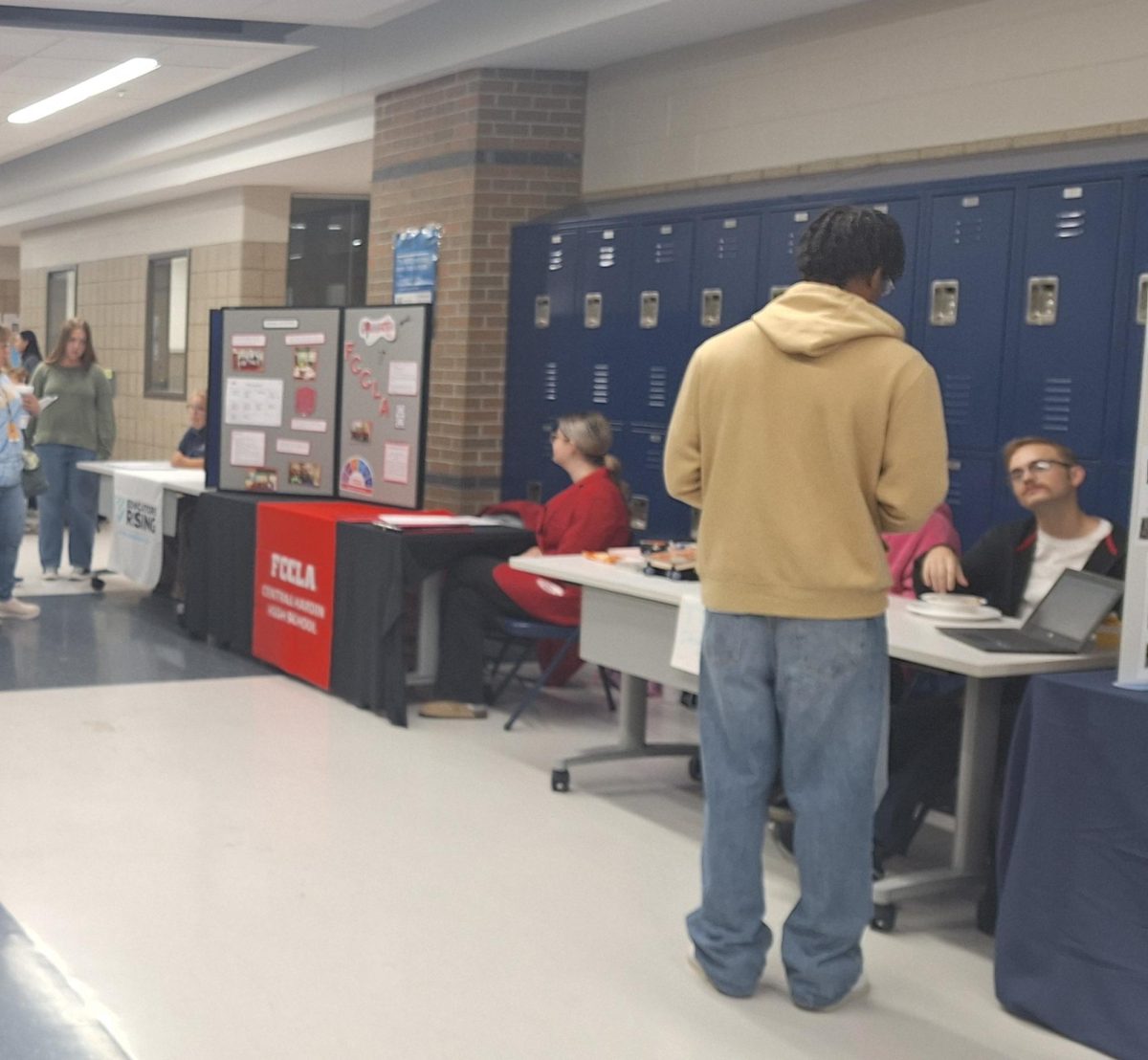Our Furry Fandom Findings
The Ins, Outs, and Ongoings of Furries with Patch O’Furr
Patch O’Furr
January 30, 2023
“Fists of furry,” the “furry fetish,” and of course, “litter boxes in schools” have been key headlines circulating across media platforms of all types for the past couple of years as certain experiences involving the fandom have been highlighted. For many, the idea of a furry seems insane, immature, and outright inappropriate, but do they really know what a furry is, or have they simply created their own definition based on rumor?
Anyone could call any fandom weird if they look at it hard enough.
Today, furries are seen as a taboo population. They are one of the many targets for “cringe culture” and their methods of entertainment and expression are overwhelmingly considered unorthodox and weird.
Yet, if you look at it from a different perspective, the furry community appears more like standard fan culture: people enjoying shared interests and demonstrating that through distinct types of media.
It is fair to say that the furries are a minority group within society. As a student-represented staff, our mission is to advocate on behalf of minority members, no matter the stereotypes or stigmas circulating through the halls.
By our definition, furries are individuals who like or identify with anthropomorphic animals, which are animals that have been given human traits. Furries can go to the extent of wearing fursuits (a costume of an animal) or they can just indulge in the media aspects of the furry fandom.
A prime example of an anthropomorphic animal is Mickey Mouse. Mickey Mouse is a mouse but happens to stand on two legs and speak.
Another example would be Nick Wilde from the Disney movie Zootopia. Nick Wilde has the blatant physical appearance of a fox while also walking on two legs, wearing clothes, and speaking like a human.
The importance of this information is to resolve the most common misconceptions about furries. Across the media and its many platforms, many kids, teens, and adults who self-identify as a furry or partake in the culture are marginalized.
They are labeled in a derogatory manner and excluded from society in more ways than one. However, the stigmas and stereotypes surrounding furries are not what defines them.
The fandom and what draws people in is more than just ears and clip-on tails. Being a furry can offer a sense of identity and community, and even if one cannot understand that on a personal level, it is important to respect those who do.
With immense curiosity and interest in understanding this unique culture, it was determined that the best option for receiving unbiased, accurate information was to communicate directly with the furry fandom.
Patch O’Furr is a long-time member of the furry community and founder of Dogpatch Press: “the most active furry news source since 2014.” O’Furr agreed to answer a series of questions surrounding furry culture with the hope to bring awareness and a more compassionate perception of its following.
The interview first started with the question: How would you define the term “furry”?
O’Furr answered, “Furry is an art-based subculture and a furry fan is a member of it. Furry can also be the aesthetic with humanized animal characters and colorful cartoon designs. Sometimes a furry can also mean a character in that style. Sometimes I’m a character in that style. I have a punk rock rat fursuit with a spiky battle jacket and a glam husky with silver pants.”
He further explained that “furry has a fuzzy definition that comes into sharp focus when something is intentionally (and more deeply) part of the subculture. You might call that capital-F Furry, [for naming purposes], vs lowercase furry for more general media.”
The genre is endless and expands across many types of media. O’Furr used examples such as mascots, shows (both child and adult animation), Disney movies, and musicals.
All of these things can be liked by people who are in the furry fandom; they can also be liked by people who aren’t in the furry fandom which is why O’Furr specifies that “intentions are important [in determining if someone is a furry].”
The background of the furry fandom can be easily misunderstood, which can lead to a lot of misconceptions about what furries like to do or embody morally.
A lot of people tend to view furries as people who identify as actual animals. Though these types of people exist (as they are formally named “Otherkin”), these people are not the same as furries. O’furr explains that “fans enjoy media and imaginary role-play sometimes”, hence the need for fursuits or characters that resemble that of an animal from Zootopia.
There are a lot of subgenres when it comes to the furry fandom, as with any fandom. O’Furr describes it like this:
“The sharpest focus is in the intersection of several circles: genre fandom, DIY/indie art subculture, and (how do I say this for a school paper) a scene for adults who take the term foxy extra literally. It makes a thriving, self-generating group that can get contradictory or silly, but you can pick any circle without the others and still be a furry.”
It is very important to know that furries are not sexually attracted to real animals. People who are sexually attracted to animals are known as Zoophiles.
O’Furr was asked whether or not being a furry was as simple as a label that you place yourself under, or if you had to embody every trait that defines the fandom? How do you decide or determine where you stand as a furry?
“If you say you’re one, you are one. If you’re doing things furries do with their members, you probably are one. If you’re doing that but denying you are one, you probably are one anyways, but most people own it. It’s unusual if someone is called furry when they aren’t.”
Believe it or not, there are more furries around you than you might think. There’s a vast and varied group of individuals more secretly involved in the fandom than those who practice their outward expression according to O’Furr.
He articulated that when you see furries, “you’re seeing ones who want to be known.”
For those who would rather keep their personal passion towards being a furry private, there are “fun secret codes” they use to communicate and recognize other furries.
“It might be wearing a furry clothing brand like Hyena Agenda, using a furry avatar on social media, or sharing inside stories and language and code-switching,” O’Furr delineated. “It’s probably youth-driven like many subcultures and not necessarily understood by parents, but [it] isn’t as new as it may seem: there’s generations of members.”
Furries began realizing their identity and forming key subcultures in the 1970s, stemming from the “underground comix movement and multi-fandom conventions.” However, the term furry itself holds roots expanding far beyond just online networking and advertisement; “furries named themselves before anyone else did” and like to create their own labels, not the other way around.
Of course this independent attitude within the culture comes with its own turbulence. The biggest obstacle with those labeling themselves as furries is that you don’t know who has the right intentions.
Not everyone is as accepting and open to the self-expression and freedom that the furry subcultures portray; a natural and common trait of fandoms of any kind.
“…abusers and malicious people on the fringe want to undermine the community from [the] inside,” O’Furr explains. “Some people don’t get to [label] themselves furries without a lot of social rejection from the fandom, but it’s complicated.”
It’s important to realize that there’s a history of outside oppression against the kind of people who find refuge and expression inside. For those uninvolved with the fandom, it can be difficult to understand why furries gate keep their culture.
“It welcomes identity expression and role play, which fits with LGBTQ people who love talking animals for some reason. Hetero[sexual] furries are a minority according to convention surveys.” Such surveys were distributed to attendees while at a convention.
“I’m not calling furry a basic identity, or just for gay people, I’m calling it a way of expression that gives people [the] freedom to be themselves.”
The community attracts a smorgasbord of creative and offbeat people, letting them embrace their eccentricity rather than being ridiculed by it. However, while being a refuge for so many, its practices will also be a target for bullies or online trolls.
“It’s like how musical theater, glam rock[,] or disco music fit with the civil rights and Stonewall era. Near the end of the popularity of 1970s disco, there was an event in Chicago called ‘disco demolition night’ where a rock DJ gathered a stadium full of people to burn records that happened to be full of queer and POC artists. They acted like it was about music taste, but it became known for showing deeper hate, and there was profit to make by hyping it up too.”
This same genre underlying hatred against furries can be commercial. The 21st century brought a spike in media programs that encouraged prejudice and outright discrimination against minority communities. The “naked bigotry” especially became prevalent after elections when furries were “scapegoated by culture war politicians with absurd fake news about litter boxes in schools.”
People love to talk, especially when the topic is on something absolutely untrue or blown way out of proportion. Like any breaking news or announcements on social media, it is important to understand that partial truths and negative connotations can “smear people with a broad brush” using a color all wrong. It is safe to say that if you aren’t educated on something, whether it be furry or not, don’t preach about it. It’s that simple.
If you wish to educate yourself on furries, you are encouraged to visit O’Furr’s furry news site, To Be the Media, where he portrays “the good, the bad, and the ugly stories” within the fandom. He wishes to rewire the toxic light on the media within furry, because publicity can be beneficial in debunking “attack stories” or simply informing an audience.
However, it is important to fact-check and utilize insightful, trustworthy sources when doing research on furries, especially given the common dramatization of the fandom.
“There are good mainstream reports like CNN’s 2018 “This Is Life” episode, and from furries, I recommend The Fandom (2020) feature-length documentary, and Furscience has interesting data. VICE and many independent professional news sites started doing well-researched furry stories in the second half of the 2010s.”
“For people getting into [the] fandom, be a creator more than a follower,” O’Furr advised. “Try making your own groups and…be cautious of private groups or events that mainly organize online and mingle [with] unaccountable adults and teens. Rely on public spaces instead. Wait until college for party scenes and conventions, and be cautious there too. There are art colleges with furry clubs…these gather younger people who can jump into careers in animation, media, or other areas that need imagination and talent: those are the real furries in schools that [the] culture war overlooked.”
The next question for O’Furr was used to explore the more emotional aspect of having a furry identity: “Was there a time that you were ashamed that you were a furry? If so, why were you ashamed and how did you deal with those feelings?”
“Once there was a chance to meet someone close to my family who I thought wouldn’t be a jerk about meeting at a hotel where I was secretly staying for a furry convention. It seemed like it would be funny to wear a furry suit and unmask by surprise.
Their shaming [conveyed that] the person didn’t care to know me at all, and their choice to ghost other innocent people too said more about them than anyone else. It’s good to have one less nasty person around, but disappointing when people prejudge.”
“The best response to that is living a good life.”
Transitioning onto his spark for this new identity, it was inquired as to how he knew that he was a furry? How did he first get involved in the fandom?
O’Furr has been a furry since the 1990’s, before there even was an official term for the word “Furry”. Most anthropomorphic animal enjoyers, like O’Furr, didn’t even know that the furry fandom existed back then.
He explains that “it’s not just a group to join, it’s a mindset first.”
Involvement in the fandom can come in many forms. One could start by sharing types of media, going to events like conventions, or even joining a club/group. O’Furr shares his story like this:
“I had many years of no [furry] activity until moving to a hot spot for subculture. In 2010 I learned about a furry dance at a club [within] walking distance in San Francisco and went out of curiosity. Dancing with a 6-foot-tall cartoon otter blew my mind. It was better than drugs (I don’t do drugs…). I got my own suit soon after and started reporting stories about the fandom.”
With any fandom, hobby, culture, or community, there are things to like and dislike. The general aspect of connection between a worldly population of unique individuals is one aspect O’Furr highlights in his adoration for furry.
He loves “the wildness of going to a party or city street event as a real-life cartoon anima
l and jumping around with music in crowds.” As a voice and journalist for the furry fandom, he especially finds “interviewing furries in Iran, Sri Lanka, or refugees from Russia and Ukraine” intriguing and beneficial in finding sources for his news site.
Being the founder of Dogpatch Press, O’Furr has knowledge of “where skeletons are buried.”
He has found that the furry fandom is really no different in its problems and antagonistic facets than any sub-category on the internet. With algorithms now a common-thread on social media and online forums, it can be easy to fall down the rabbit hole into toxic space or trend.
However, these niche areas are not what defines furry, and it is absolutely vital that outsiders realize this.
For such outsiders, a comparable fandom or culture to furry is that of drag. It can oftentimes even be confused to be the same thing, for certain characteristics crossover and similar genres of people tend to be attracted to events of both communities.
Drag, which could be generally defined as dressing up in extreme fashion, is a very popular hobby/practice in the LGBTQ+ community. Participants of drag tend to dress up as completely different people, oftentimes as a different gender. They may embody a persona all anew, similar to how an actor plays a role; only this role is defined and characterized however they choose.
“Having [the] furry name “Patch O’Furr” was like picking a funny drag name,” O’Furr explained. “Fursuiting isn’t exactly putting on an animal identity though[;] I identify with animals, not as one. It’s more like an intensifier for
experiences I might not be able to process so easily, or a cartoon-like fun experience where you don’t just meet characters, you can be one and take others with you.”
“[It’s also] an amazing excuse to party and try on outfits. I never cared much about having a look or fashion until realizing that as a furry under a suit, I can wear anything with no limits. [This] led to having a big collection of both costume items, and regular but bonkers fashion. I don’t go out of the house now without having a ‘Look’ and regularly get comments about wearing great outfits…I don’t spend lots of time with drag but some shows I’ve seen (like Dragula) give off the same energy.”
If you or someone you know are interested in learning more about furry culture or wish to further involve yourself in the fandom, there are many online forums or outlets where you can connect with others like yourself. The furry community is all about finding the niche subculture that you feel most comfortable with and enjoy.
With the vast and various groups of those who identify as a furry or who practice cosplaying as one growing, the opportunities to explore this form of anthropomorphism are endless.
Being a member of this fandom is not something to be ashamed of, and if you are someone who ridicules furries, it is encouraged that you educate yourself on the culture.
There is more to the concept than the brightly colored, fantastical costumes. There is depth and a sense of escape from reality: something everyone desires once in a while.
Central Hardin strives for an all-accepting environment; this includes accepting individuals involved in the furry fandom. You don’t have to like furries or even associate yourself with them; but open your hearts to them, for no one deserves to be ridiculed for their passions in life.


















